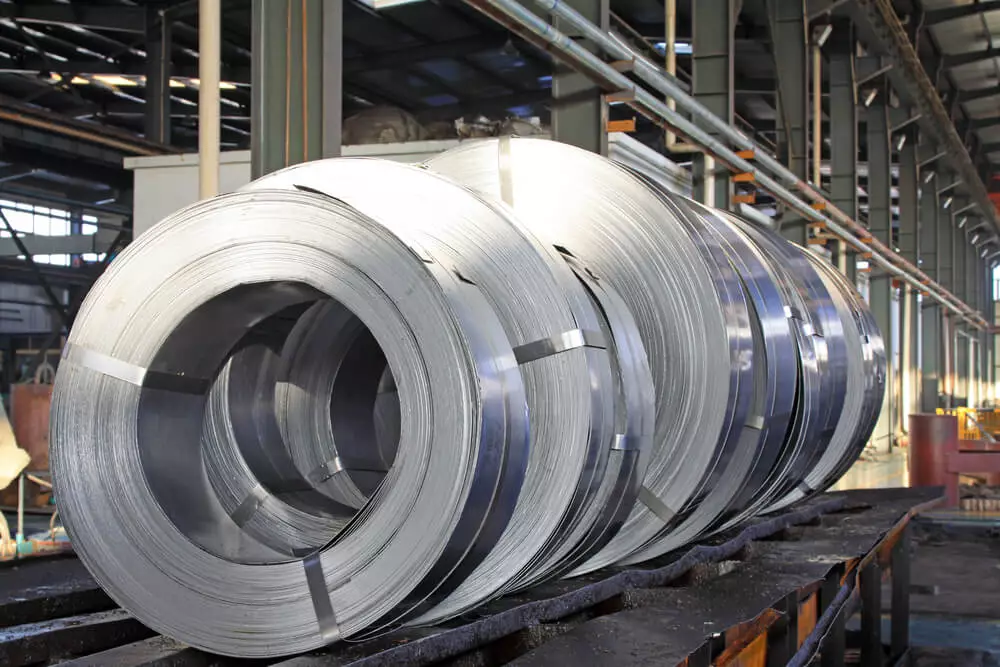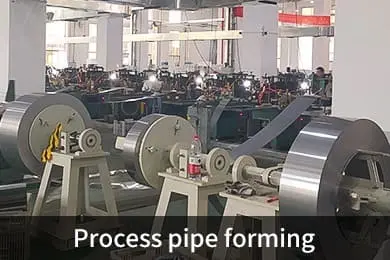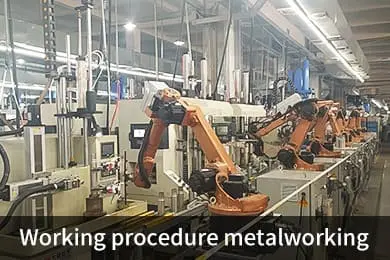Are you considering purchasing a stainless steel water bottle but have concerns about the manufacturing process, potential chemicals and contaminants, or environmental impact? Look no further.



In this article, we will address common questions and concerns regarding stainless steel water bottle manufacturing to give you a better understanding of what goes into making these popular hydration containers.
You may be wondering how stainless steel water bottles are made. The manufacturing process involves several steps, including cutting the steel sheets into desired shapes, forming the bottle body and cap through deep drawing or stamping processes, and finishing with polishing or coating. Each step must be carefully monitored to ensure the final product is high-quality and meets safety standards.
But beyond the production process itself lies additional considerations such as material sourcing, waste management practices, and energy usage that can affect both the quality of the product and its environmental impact. We'll delve deeper into these topics in this article to provide you with a comprehensive overview of stainless steel water bottle manufacturing.
The Manufacturing Process of Stainless Steel Water Bottles
So, you're probably wondering how they make those sleek stainless steel water bottles you love so much. Well, let us tell you, it's a pretty fascinating process.
First of all, the raw materials used in manufacturing these water bottles are primarily stainless steel sheets and coils. These raw materials are sourced from trusted suppliers who adhere to strict quality standards.
Once the raw materials have been sourced, they undergo a series of manufacturing techniques to transform them into finished stainless steel water bottles. These techniques include cutting and welding the sheets and coils together to form the bottle shape, polishing the surface for a smooth finish, and adding any necessary features like caps or handles.
Quality control is an essential part of the manufacturing process for stainless steel water bottles. To ensure that each product meets high-quality standards, manufacturers implement rigorous testing procedures throughout every stage of production. This includes checking for leaks and ensuring that each bottle is durable enough to withstand everyday use.
With such attention to detail in both manufacturing techniques and quality control measures, it's no wonder why these water bottles are so popular among consumers today!
Chemicals and Contaminants
You may wonder about the potential for chemicals to leach into your water from a stainless steel water bottle. It's important to note that regulations and safety standards are in place to ensure that the materials used in these bottles are safe for use with food and beverages.
Keep reading to learn more about the types of chemicals that can be found in stainless steel, how they can affect your health, and what measures are taken by manufacturers to prevent contamination.
Potential for Chemicals to Leach into Water
Chemicals can potentially leach into the water from stainless steel water bottles, posing health concerns. Leaching risks can arise due to poor quality materials or manufacturing processes that use hazardous chemicals. To prevent these risks, manufacturers should ensure that they use high-quality stainless steel and avoid using any harmful chemicals during production.
Compared to other materials like plastic or aluminum, stainless steel is considered safer for drinking water storage because it doesn't contain BPA or phthalates, which are known to have negative health effects on humans. However, if the manufacturing process isn't done correctly, there's still a chance of contaminants and chemicals transferring into the stored water.
As such, it's important to choose a reputable manufacturer with strict quality control measures in place to minimize any potential risks of chemical leaching.
Regulations and Safety Standards
It's crucial for consumers to prioritize safety and look for regulatory compliance when choosing stainless steel water bottles. One way to ensure this is by checking if the product has industry certifications such as NSF International or FDA approval. These certifications prove that the manufacturer has complied with strict quality control standards during production.
Another important factor to consider is the material composition of the bottle. Stainless steel water bottles are typically made from food-grade 18/8 (or 304) stainless steel, which is safe and non-toxic. However, some manufacturers may use lower grade materials or add coatings that contain harmful chemicals like BPA or phthalates.
It's important to research and choose a reputable brand that uses high-quality materials and avoids potentially hazardous substances in their products. By being mindful of these regulations and safety standards, you can make an informed decision when purchasing a stainless steel water bottle that prioritizes both your health and the environment.
Environmental Impact
The environmental impact of manufacturing stainless steel water bottles is a significant concern that can't be ignored. While stainless steel is recyclable and can be used repeatedly, the production process involves a lot of energy consumption and greenhouse gas emissions.
Here are some key points to consider when it comes to the environmental impact of producing stainless steel water bottles:
- Raw materials: Stainless steel is made from iron ore, chromium, nickel, and other metals. The extraction and processing of these materials require a considerable amount of energy and emit greenhouse gases.
- Manufacturing process: The production process for stainless steel water bottles involves several steps such as melting, casting, rolling, shaping, welding, polishing, and coating. Each stage requires energy-intensive machinery that contributes to carbon emissions.
- Transportation: Once the bottles are manufactured, they need to be transported from the factory to the distribution centers or directly to retailers. Shipping over long distances can result in additional carbon emissions.
Despite these challenges, manufacturers have been making sustainability efforts by using eco-friendly materials like bamboo or recycled plastic for bottle caps or packaging. They've also been implementing more efficient manufacturing processes that reduce waste and improve energy efficiency.
Consumers can also play their part by choosing reusable stainless steel water bottles over single-use plastic ones and recycling them properly at the end of their lifecycle.
Overall, while there are environmental concerns associated with producing stainless steel water bottles, manufacturers have been taking steps towards sustainability while consumers have become increasingly aware of their choices' impacts on our planet's health. As a result, we're hopeful that together we can continue making progress towards more earth-friendly practices in all aspects of life!
Benefits of Stainless Steel Water Bottles

If you're looking for a reliable and long-lasting water bottle, stainless steel is the way to go. These bottles are built to withstand wear and tear, making them an excellent investment compared to cheaper alternatives that may need frequent replacement.
What's more, stainless steel is non-reactive and doesn't leach harmful chemicals into your water, ensuring that you stay healthy while staying hydrated. And although they may cost more upfront, stainless steel water bottles can actually save you money in the long run since they don't need to be replaced as often as plastic ones.
Durability and Longevity
With proper care and maintenance, stainless steel water bottles can last for years. This is due to their durable material composition that resists rust and corrosion. Stainless steel is primarily made up of iron, chromium, nickel, and other alloys that make it resistant to wear and tear.
To ensure the longevity of your stainless steel water bottle, it's important to follow a few simple steps. First, clean your bottle regularly with warm soapy water or vinegar to prevent bacteria buildup. Secondly, avoid using harsh chemicals or abrasive materials when cleaning your bottle as they can cause scratches or damage the surface layer. Lastly, store your bottle in a cool dry place away from direct sunlight to prevent discoloration or warping over time.
By following these guidelines, you can enjoy the eco-friendly benefits of stainless steel water bottles for years to come!
Health Benefits
Now that you know how durable and long-lasting stainless steel water bottles can be, let's talk about the health benefits they offer.
First and foremost, stainless steel is a non-toxic material that doesn't leach harmful chemicals into your drinking water. This means that when you use a stainless steel water bottle, you can be sure that the only thing going into your body is clean, refreshing H2O.
In addition to being safe for consumption, using a reusable stainless steel water bottle also has great hydration benefits. By carrying around your own refillable bottle, you'll always have access to fresh water without having to rely on single-use plastic bottles or disposable cups.
Plus, staying hydrated throughout the day can help improve mental clarity and physical performance while reducing feelings of fatigue and lethargy. So not only are stainless steel water bottles good for the environment, but they're also great for your overall health and wellness too!
Cost-effectiveness
You'll be pleased to know that opting for a stainless steel water bottle is not only good for your health and the environment, but it can also save you money in the long run.
The production efficiency of stainless steel water bottles ensures that they are durable and long-lasting. Unlike plastic water bottles, which need constant replacement due to wear and tear, stainless steel bottles can last for years without losing their quality.
Moreover, the material selection process involved in making high-quality stainless steel water bottles guarantees cost-effectiveness. Manufacturers choose high-grade materials that are resistant to rusting, denting, and other forms of damage. This means that users do not have to worry about replacing their water bottles frequently or spending money on repairs.
In conclusion, investing in a stainless steel water bottle may seem like an expensive option at first glance, but it is actually a smart financial decision in the long run due to its durability and cost-effectiveness.
Choosing the Right Stainless Steel Water Bottle

It's important to choose a stainless steel water bottle that fits your needs and lifestyle. When selecting a stainless steel water bottle, consider the design features that will make it easy for you to use.
For example, if you plan on using it while hiking or on other outdoor activities, look for a bottle with a carabiner clip or carrying handle. This will allow you to easily carry it with you as you explore.
Another important factor is insulation options. If you prefer cold drinks, look for a double-walled insulated bottle that will keep your drink chilled for hours. On the other hand, if hot beverages are more your style, opt for an insulated bottle that can keep your coffee or tea hot all day long.
Additionally, consider the size of the opening and whether it's compatible with different types of straws or ice cubes. In addition to design features and insulation options, also think about the durability of the stainless steel water bottle.
Look for one made from high-quality materials that won't dent or scratch easily. A good quality water bottle can last for years and save money in the long run by reducing waste from disposable plastic bottles.
By taking into account these factors when selecting your stainless steel water bottle, you can choose one that meets your needs perfectly while promoting sustainability at the same time.
Conclusion
Congratulations! You now have a better understanding of the manufacturing process, chemical concerns, environmental impact, and benefits of stainless steel water bottles. With this knowledge in mind, you're better equipped to make an informed decision when choosing the right stainless steel water bottle for your needs.
When it comes to purchasing a stainless steel water bottle, be sure to consider factors such as durability, size and capacity, ease of cleaning, and design. Additionally, look for bottles that are made with high-quality materials and have been tested for safety.
By taking these steps, you can enjoy all of the benefits of using a stainless steel water bottle while minimizing any potential concerns or risks.
Remember: staying hydrated is essential for maintaining good health and well-being, so why not do it in style with a reliable and eco-friendly option like a stainless steel water bottle?

